游戏设计师从创意到项目提案的完成攻略
作者:David Arcila
你要如何将一个粗糙的游戏理念描述得生动而有趣?这是游戏设计师必须克服的障碍之一,因为你的职责就是在一个充满限制的环境中创造有趣的体验。
也许遵照本文的建议并不一定会让你立即设计出一款可以投入开发的游戏,但请相信我,这一系列非常规的做法的确详细说明了从设计到项目提案阶段的流程。
加强你的游戏设计能力
我想与你分享令一直令我强化游戏设计的一个习惯:将现实生活经历转变为游戏。
当我开始开发电子游戏时,我养成了尝试将日常生活经历想象成电子游戏场景的习惯。这可以让你对发生在身边的事情十分敏感,快速感知其中的趣味或沮丧因素。
例如,你在一次飞行过程中到达机场时却发现自己的行李丢失了。这是非常令人抓狂的情形,但现在以这次经历为例,想象一下行李如何丢失,当时有谁在场。你可以据此制作一款游戏吗?
你能将平淡无聊转变为有趣的事情吗?
要不要试着设计一款要求玩家管理机场行李传送带,当乘客等得不耐烦时玩家就会丢分的游戏?或者如果你在飞行中经历了一场骚乱,变得有点神经质时……能不能制作一款你得驾驶一艘飞机,并通过恐吓乘客和采取突然措施而得分的游戏?
当然可以!这就是你需要写下来的初始想法。实际上,你还可以去参阅一本名为《Tiny Game Design Tool》的小册子,通过即时记录自己的想法来简化这个过程。
这个工具是一个可打印的PDF文件,你可以将其放入钱包,这可以让你在短时间内确定游戏的基本元素:
*情感、机制和主题
*主角
*目标
*障碍
*关卡设计
基本元素
这就是创意的炼金术。我们有一个初始想法,但它就像是一块粘土,你得先打模,将其一分为二,塑出形状等等。现在我们就来捣鼓这个理念,但怎么做呢?
另一个可持续训练你的游戏设计能力的创造做法是,采用三个基本的创意元素:复制、转变和结合。
复制
通过复制现成的游戏来训练游戏设计,但同时也要运用一些小小的调整令游戏更简单或更困难。这个重复和修改的过程就是所谓的迭代,它在软件和电子游戏开发过程中极为普遍。
遵从这一做法的游戏例子包括:
*《Plasma Pong》:它是《Pong》的变体,结合了流体动力学和让球粘在划桨上的新游戏机制。
*《FPS-MAN》:它借鉴了《吃豆人》玩法,但更改了视角。你要从吃豆人的视角执行操作,它完全改变了游戏体验。
*《Portal:The Flash Version》:它采用了《传送门》的基本机制,但将其限制在2维空间中。
转换
你今天、本周或本月有没有什么有趣的经历?如果没有,那就借鉴一个!看看报纸首页的新闻,你会发现这些报道基本上都有一些亮点。选择一个你喜欢的报道,将其转变成电子游戏。自问:参与其中的人物是谁?事件发生地点?其中的人物有没有可能成为我游戏中的有趣主角?
最近采用这类做法的游戏是《Riot》,玩家在其中要扮演抗议者和警察这种角色。该游戏理念起源于Leonard Menchiari想捕捉他自己遭遇抗议者时的感受。
我个人在这方面的实践是在某项要求参与者制作基于电视新闻的开发活动中制作了一款小游戏,该游戏理念取材于一位小孩在波哥大(哥伦比亚首都)逃避安检、摄像头和检查点的情况下登上飞机,最终到达智利的新闻。这则消息让我快速想到了如何在机场环境中植入潜行机制的方法。
结合
将现成的游戏与另一款游戏相结合,或更改其题材。这会发生什么情况?如果是拿《超级马里奥》这样的游戏,并运用RPG游戏中的技能树呢?
关于结合游戏的最近例子是《Bombermine》,它将经典游戏《Bomberman》与多人玩法元素融合在一起。
游戏角色
现在我们可以开始转入角色设计环节。
这里我们可以采用《Game Seeds》这一游戏设计工具。该游戏通常是多人模式,但为了便于此处实践我们将采用专注于角色发展的单人模式。
我们将以这15张卡牌为基础。请点击6张具有你所感兴趣的游戏机制的卡牌。现在我们将分三个步骤,将卡牌上的信息填写到以下的Game Seeds表格。
步骤1:填写英雄资料
现在你已经选择了6张卡牌,选择其中出现最多的图标种类,并填写到表格中。
例如,在你的6张卡牌的“物种”类型中,你可能有3个是人类图标,2个机器人图标,以及一个动物图标。鉴于这种情况,你的游戏角色就是人类。
例子
在这15张卡牌中我选择了飞行、逃跑、比赛、决斗、破坏和导航。以这些卡牌作为我的角色特点:
*动物(出现3次)或机器人(出现3次)(两者平手,所以我选择了机器人)
*双性人(出现4次)
*出现在古代(出次4次)
*游牧民(出现5次)
*高大(3次)或矮小(3次)(又是平手,所以我选择了高大)以及沉重(4次)
步骤2:填写英雄属性
现在让我们看看卡牌底部并以X标注每个英雄属性。
例子
从我选择的卡牌中可得以下属性:
*STR(力量)(6次)
*HEA(健康)(6次)
*DEX(灵敏)(4次)
*WIS(智慧)(2次)
*CHAR(魅力)(0次)
所以,力量和健康就是我游戏角色的主要属性,它既不聪明也不迷人!
完成这一步后,你可以在角色开发环节添加你对角色的个人看法。这将决定你赋予角色个性时的所有细节。
步骤3:挑选机制,绘制英雄
最后,要从你选择的6张卡牌中挑选出自己最喜欢的游戏机制。这将成为你的主要玩法机制。现在你可以根据这些属性和资料绘制英雄的草图。
以下就是我的英雄草图——一个高大而沉重,由银行保险库的材料制成的双性机器人。
游戏设计的基本元素
现在游戏基础和主角已经到位了,应该考虑组成游戏的其他元素了。我推荐你用以下方法,这样可以让你更直接地定义你想为玩家呈现的游戏体验。
*美学:这是指游戏的外观,音效和风格,也是与玩家最为直接相关的元素。
《Limbo》通过其美学设计成功虏获了人们的关注。
*机制:这是游戏的规则。使用你之前的活动中所选择的游戏机制并对其扩展,自问你游戏的主要目标是什么,玩家如何实现这一目标。
《Pong》的规则极为有限,但这并不意味着它很无趣。
*故事:你想通过游戏告诉我们什么?它会是像NES游戏一样的微型故事,还是复杂而具有分支的故事?
David Cage很擅长通过讲故事推动游戏发展,其代表作《Indigo Prophecy》和《暴雨》就是这方面的典型。
*技术:这是美学、机制和故事同时发生的媒体。你将使用哪种技术来支持这款游戏?
(要判断你的游戏更适合当桌游还是智能手机游戏)
筛选你的创意
我们的游戏在发展并最终成型,现在是时候削掉粗糙的边角了。我们可以通过“牌组滤镜”方法所提的问题来提升游戏。
上图中的每张牌都有不同的标志:
*玩家:桌游棋子的标志
*游戏或游戏机制:骰子组标志
*游戏设计过程:闪电球标志
*设计师:思索的设计师标志
*玩家体验:思考泡泡标志
例如,此时我觉得我的游戏并不像我所希望的那样吸引玩家,所以我要找一张拥有思考泡泡标志的卡牌。此时我要绘制“兴趣曲线滤镜”。
这个卡牌所提出的一些问题会让我思考游戏中必须具备的兴趣起伏点,以及它们在游戏体验中的波动情况。
所以,如果你此时的游戏在某些区域上有所欠缺,就可以开始根据卡牌上的内容对自己发问。你可以根据这些问题改游戏的弱点。
提案
完成上述步骤后要将你的理念投入压力测试,即与他人分享和推荐你的游戏理念。
提案是每位游戏设计师都应该了解的概念。以下是我对于完成体面、清晰提案的一些基本建议:
*简化原则:不要给赞助人或开发商看喋喋不休的文本,尽量多用图片,用图片来说话!
*尽快开门见山:在介绍过程中尽量简化,恰到好处地控制兴趣点。
*使用通用案例快速传达游戏理念:不要复杂地解释你的游戏概念,最好用一些大家耳熟能详的游戏或电影为例。例如,“这款游戏就好比是《Django Unchained》与《生化奇兵》的合体”或者“这款游戏就是太空版的《侠盗猎车手》”。
*要有激情而谦逊:但如果你之前已经有些游戏取得了一些成就(例如连续一周在iOS游戏榜单登顶)或者拥有上百万次访问量,那就可以提一下。
*预留一些问答时间:赞助人或发行商一般都会有一些你并没有在提案中解答的问题。这是极为常见的情况,所以一定要做好即时应答的准备。
提示:记住游戏设计师必须具备的两个主要属性:一个是提问,另一个是倾听。当你倾听不同人给予的建设性反馈时,要知道他们的建议也只是个人观点。这一点对游戏设计师来说甚为重要,要向不同人展示游戏,无论是硬核玩家还是你母亲——要了解不同群体对你游戏的看法。
总结
我建议你仔细观察自己的日常生活经历并思考“我能否据此创造一款游戏?”这个问题。当你有一个听起来很有趣的点子时,要记得即时写下来,并尽快开工。此外,不要将自己的游戏设计才能局限于数字世界,要知道杰出游戏理念并不一定是诞生于电脑之前。可以去买些粘土、标记和纸板,制作一些桌游原型。
原文发表于2013年3月22日,所涉事件及数据以当时为准。(本文为游戏邦/gamerboom.com编译,拒绝任何不保留版权的转载,如需转载请联系:游戏邦)
From Zero to Pitch: A Walkthrough for Game Designers
By David Arcila
How can you take a rough game idea and turn it into something fun, interesting and engaging? This is definitely one of the most difficult obstacles that you must tackle as a game designer, as your job is to craft enjoyable experiences in a constrained environment.
Would you believe me if I told you that after you finish reading and participating in the activities established in this article, you will have a game designed and ready to be developed? Yes, I know it sounds inconceivable, but trust me – this series of unconventional exercises will explain the workflow of designing a brand new game from zero to pitch.
Strengthen Your Game Design Muscle
I want to share with you one of the habits that helps me strengthen my game design muscle all the time: turning real life experiences into games.
When I started developing video games, I acquired the habit of trying to take everyday experiences and imagine them in terms of a video game; this makes you very aware of the things that are happening around you and the fun or frustrating factors in them.
For example, let’s say that you took a flight and when you arrived at the airport your luggage got lost. This is a very frustrating scenario, but now take that experience and try to imagine how the luggage got lost and who the people involved in that particular situation are. Could you make a game based on this?
Can you take something apparently dull and turn it into something fun?
What about a game where the player has to manage the conveyor belts at an airport and he loses points when passengers reach a certain level of frustration from waiting for their luggage? Or what if you experienced some turbulence during your flight and you got a little bit nervous… could you make a game where you had to fly an airplane and gain points by doing abrupt manoeuvres and scaring the passengers?
Of course you can! This is the raw idea that you need to write down on paper and start working on. As a matter of fact, there’s this little booklet called the Tiny Game Design Tool that can make this process a little bit easier, by helping you jot the idea down as soon as possible.
This tool is a printable PDF that you can carry in your wallet which helps you establish in very little time the following basic elements of your game:
Emotion, Mechanic and Theme
Main Character
Objects
Obstacles
Level Design
Play With the Elements
We have a raw idea. This idea is like clay: you can mold it, split it into two, make a shape with it, and so on. Now we have to play with this idea… but how?
Well, another creative exercise that is very useful to constantly work your game design muscle is to put in good practice the three basic elements of creativity: copy, transform and combine. I took this elements from the third episode of Kirby Ferguson’s documentary Everything is a Remix and they will help us exercise our mind so that it can always be wide open to creativity.
Copy
Get practice and experience by copying existing games, but also apply small modifications to make the game easier or more difficult. This process of repetition and modification is called iteration and is very common in software and video game development.
An example of some games that follow this exercise are:
Plasma Pong, which is a Pong variant with fluid dynamics and a new game mechanic that lets the ball stick to your paddle.
FPS-MAN, which is a take on Pac-Man but with a change in perspective. Now you look at the action from the point of view of Pac-Man and it changes the game experience completely.
Portal: The Flash Version, which takes the basic mechanics of Portal but constrains them to a two-dimensional space. This is also known as a demake.
Transform
Did you have an interesting experience today, this week or this month? If you didn’t… borrow one! Take a newspaper and watch the front page news; you will notice that these stories are generally based on events that have something interesting to tell. Pick a story you like and turn it into a video game. Ask yourself questions: Who are the people involved? Where did the action happen? Could the personalities involved be interesting characters for my game?
A recent game that tackles this type of exercise is Riot, in which the player experiences both sides of a protest, as rioters and as police officers. This idea came to fruition when Leonard Menchiari wanted to capture the feeling of his own experience of protests.
A kid that has to reach an airplane while avoiding security guards, cameras and checkpoints
A kid that has to reach an airplane while avoiding security guards, cameras and checkpoints.
A more personal experience I had with this exercise was a small game I made for a jam where participants had to develop games based on TV news. My game was called “Escape from el Dorado”, and was based on a TV report about a kid that infiltrated the “El Dorado” airport in Bogotá and got into a plane that ended up in Chile. This story made me think immediately about how I could implement stealth mechanics in an airport setting.
Combine
Take an existing game and combine it with another game, or change its genre. What would happen? What if I took a game like Super Mario Bros. and applied a skill tree just like the ones found in role-playing games?
A recent example of combination is Bombermine, which takes the classic Bomberman game and mixes it with multiplayer elements.
Planting the Characters’ Seeds
Now we’ve gone from a raw idea to something that is starting to take shape, and slowly but steadily we are covering the basics. Next, let’s design the characters.
We’ll start with a game design tool called Game Seeds. This game is generally played in groups, but for this particular exercise we will play a single player variant focused on character development.
Tip:I assume that by now you know the basics of playing Game Seeds. If not, please take a couple of minutes to read my guide here.
We’re going to start with this fifteen card grid as our foundation. Please pick just six cards that have game mechanics that appeal to you. Now, in three steps we’re going to fill the Game Seeds sheet found below with the information given to us by the cards:
This is the Game Seeds sheet. Click here to download the printable version
This is the Game Seeds sheet. Click to download the printable version.
Step 1: Fill the Hero Profile
Now that you have selected the six cards, go through each one and write down the icons that appear the most for each category. (In the case of a draw, choose the one you like the most.)
For example, in the “species” category of your six cards you might have three human icons, two robot icons and one creature icon; based on this, your character will be human.
Example
From the fifteen card grid I chose Fight, Escape, Race, Duel, Destroy and Navigate. Using those cards this was my character:
Creature (3 occurrences) or Robot (3 occurrences) (a draw, therefore I pick Robot)
Androgyne (4 occurrences)
Lives in the past (4 occurrences)
Nomad (5 occurrences)
Tall (3 occurrences) or Short (3 occurrences) (a draw, therefore I pick Tall) and Heavy (4 occurrences)
Step 2: Fill the Hero Attributes
Now take a look at the bottom of the cards and mark the Hero Attributes section with an “X” for each attribute that appears.
Example
Using the cards I chose I get the following attributes:
STR (STRENGTH) (6)
HEA (HEALTH) (6)
DEX (DEXTERITY) (4)
WIS (WISDOM) (2)
CHAR (CHARISMA) (0)
So Strength and Health are the main attributes of my character, and it is neither wise nor charming!
Once you’ve done this, add your personal touch to the character in the Character Development section. This will define all the details that are going to give personality to your character.
Step 3: Pick the Mechanic; Draw Your Hero
Finally, pick your favourite game mechanic from the six cards you chose. This will be your main gameplay mechanic. Now you can draw a sketch of your hero based on all the attributes and his profile.
This is my hero sketch – a tall and heavy androgyne robot in a steampunk world, who was built using parts from a bank vault:
This is the point were you realize I suck at drawing
This is the point where you realize I suck at drawing.
The Basic Elements of Game Design
Now that we have a basic foundation of our game and a main character, it’s time to play with the elements that will form the game. I recommend you start with the elemental tetrad shown above, because it’s going to make things very straightforward for you when defining both your game and the experience you want to give to your players.
Use what you have done so far as a guide to define the following:
Aesthetics: This is how the game looks, sounds and feels, and it’s also what has the most direct relationship to the player.
Limbo is a game that is very good at capturing someone’s attention just by it’s aesthetics
Limbo is very good at capturing someone’s attention just by its aesthetics.
Mechanics: These are the rules of your game. Use the game mechanic you chose in the previous activity and expand on it, asking yourself what the main goal of your game is and how players are going to achieve it.
Pong has a very limited set of rules, but that doesn’t mean the game will be boring
Pong has a very limited set of rules, but that doesn’t mean it’s boring.
Story: What tale do you want to tell through your game? Is it going to be a micro-narrative as in NES games, or is it going to be a complex and branching story?
David Cage is always pushing the envelop in terms of storytelling with games like Indigo Prophecy and Heavy Rain
David Cage always pushes the envelope in terms of storytelling, with games like Indigo Prophecy and Heavy Rain.
Technology: This is the medium in which the aesthetics, mechanics and story will take place. What kind of technology are you going to use that will make the game possible?
Maybe your game works better as a board game, or as a game for smartphones
Maybe your game works better as a board game, or as a game for smartphones.
Look at Your Creation Through Lenses
Our game is growing and finally taking shape, and now it’s time to polish the rough corners. To do this we are going to use the questions from the Deck of Lenses and focus them in areas of our game that we think need improvement.
Related Posts
Testing Every Aspect of Your Game Design With a Deck of Lenses
There are five different areas related to game design that you can tackle with the Deck of Lenses to improve your game:
Notice that each card has different symbols
Notice that each card has a different symbol, representing these five areas.
The player: Board game piece symbol
The game or the game mechanics: Pair of dice symbol
The process of game design: Lightning bolt symbol
The designer: Thinking designer symbol
The player experience: Thought bubble symbol
For example, at the moment I feel that my game is not engaging the player as much as I want, so I look for a card with the thought bubble symbol. In this case I draw “The Lens of the Interest Curve”:
006_interest
This card asks several questions to help me think about the interest spikes in the interest curve that my game must have, and the way it fluctuates through the game experience
So, if you feel that at this point your game is lacking in any of these areas, you can start asking yourself the questions found in the cards. Based on these questions, you can start to work on improving that weakness.
Pitch
006_pitch
Once you finished creating and putting your idea to the lens stress test, it’s time to sell it and share it!
Pitching is something that every game designer needs to know how to do. These are my basic tips to have a decent, clean pitch:
K.I.S.S (Keep It Short and Simple): You don’t want to overwhelm your sponsor or publisher with a wall of text. Be as visual as possible; pitch with images!
Get to the good stuff as fast as possible: Try to be as brief as you can and maintain a solid interest curve throughout your presentation.
Use universal examples to quickly convey what your game is all about: Instead of trying to come up with a complex explanation about what your game is or isn’t, try to use examples with known games or movies. For example: “This game is like Django Unchained meets Bioshock”, or “This game is like Grand Theft Auto in space”.
Be passionate and humble: But, if you have previous games that have some kind of achievement such as “Top iOS game for a week” or a game with a million visits, it’s okay to mention this.
Make sure that there is time left for Q&A: The sponsor or publisher will generally have questions that they want to ask you that you might not have answered in your pitch. This is completely normal so bear this type of scenario in mind so that you can answer each question.
Tip: Remember that there are two main attributes that a game designer must have: one of them is asking questions, the other is listening. When you listen to constructive feedback from different people they can give you answers based on their perspectives. This is crucial to a game designer. Show your game to a spectrum of people, from a hardcore gamer to your mom – that way you can understand what each of them sees in your game.
Conclusion
As you can see over the course of this article we went from zero, to a raw idea, then character development, then analyzing and testing the idea and finally the pitch. Congratulations, you just designed a game! But… this is not something that you can do once and forget about; you have to practice all the time.
I recommend you observe carefully your daily experiences and think “Can I make a game based on this?” Once you have an idea that sounds fun, write it down in your Tiny Game Design Tool and start working on it as soon as possible. Also, don’t limit your game design talents to the digital world; you don’t need to be in front of a computer to come up with great game ideas. Buy some clay, markers and large sheets of paper and start prototyping board games.(source:gamedevelopment)


























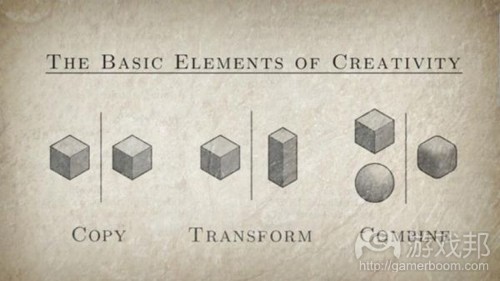
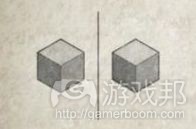


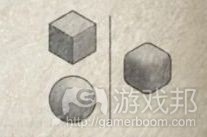
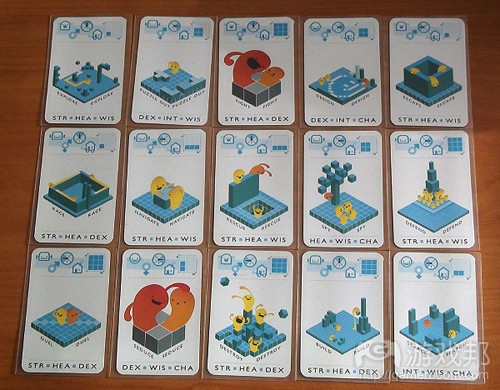
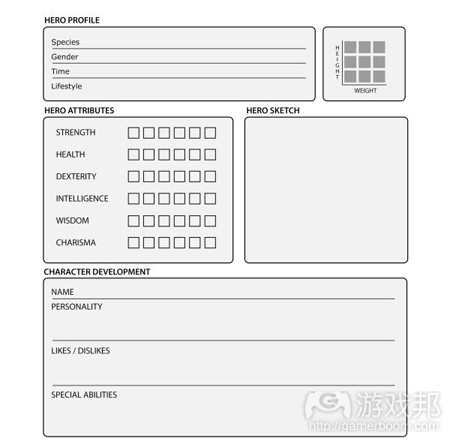
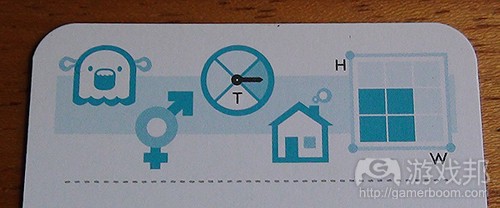

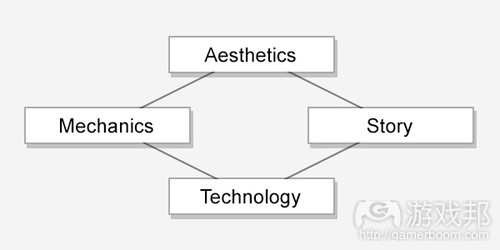



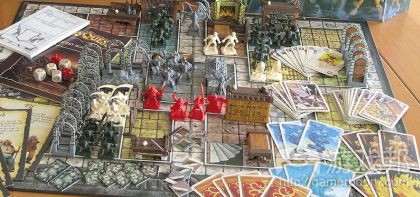

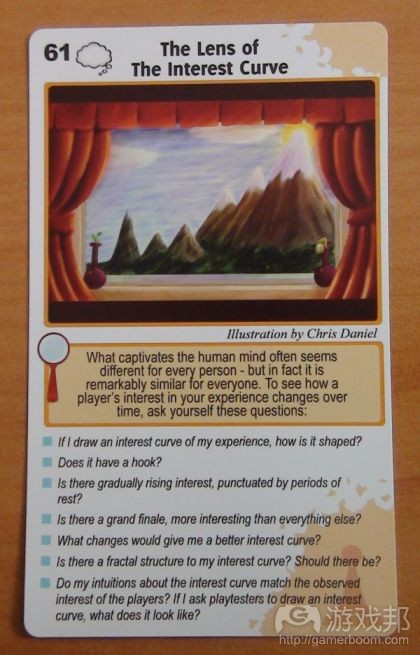















 闽公网安备35020302001549号
闽公网安备35020302001549号